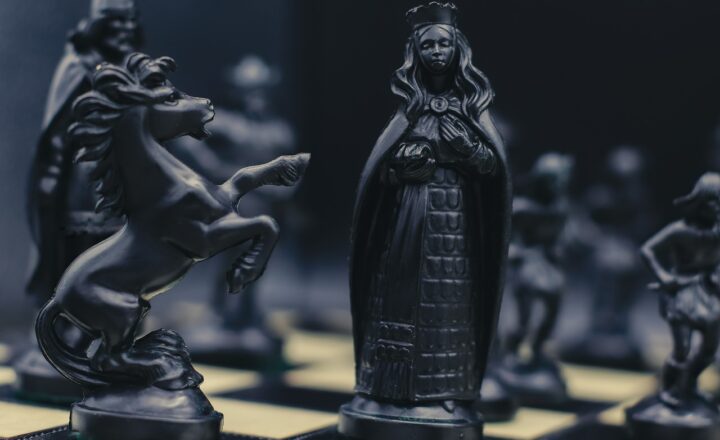How Ancient Cultures Explained Rain and Its Mystical Origins
November 12, 2024

Rain has been a vital element in the survival and prosperity of societies since the dawn of civilization. Ancient cultures around the world developed their own unique explanations and mythology surrounding rain, often attributing it to the actions of gods or other supernatural forces. This article delves into how various ancient civilizations interpreted rain, its significance in their cultures, and the mystical origins they ascribed to this natural occurrence.
1. The Importance of Rain in Ancient Societies
Rain is essential for agriculture, drinking water, and the overall ecosystem. In ancient times, societies that depended heavily on farming viewed rain as a blessing or a curse. Good rain would mean bountiful crops, while drought could lead to famine and suffering. Thus, the unpredictability of rain made it a significant concern, leading to the development of various cultural practices aimed at explaining and influencing this natural phenomenon.
This reliance on rain led many ancient cultures to create rituals, prayers, and myths that encapsulated their understanding and reverence for this precious resource.
2. Mesopotamia: The Gods of Rain
The earliest known civilization, Mesopotamia, was situated between the Tigris and Euphrates rivers—a region that experienced unpredictable flooding. The Sumerians, one of Mesopotamia’s ancient peoples, believed that rain and agriculture were inextricably linked to their deities. They worshipped Enlil, the god of air and wind, and Adad, the god of storms and rain.
Rituals were performed to appease these gods, especially during the planting and harvest seasons. The Sumerians also had a rain-related myth that explained how the gods battled to bring about rain, thus indicating that combat and struggle were essential for the cyclic return of water.
3. Ancient Egypt: The Tears of Isis
In Ancient Egypt, rain was less significant due to the reliance on the Nile River’s seasonal flooding. However, the Egyptians still celebrated rain when it occurred. They explained it through a myth involving Isis, the goddess of fertility and motherhood. According to the myth, rain was believed to be Isis’s tears for her deceased husband, Osiris. Her tears, which fell onto the parched earth, brought life back to the land.
The Egyptians performed ceremonies during the wet seasons, hoping to invoke Isis to ensure that the Nile would flood and supply water for their crops.
4. Native American Cultures: The Sacred Rain Dance
For many Native American tribes, rain was seen as a gift from the spirits. They believed it played a crucial role in the cycle of life. The Pueblo people of the Southwest United States performed the Rain Dance, expressing gratitude and asking for rain through vibrant dancing, music, and ceremonial practices. This ritual was a community effort aimed at honoring the deities responsible for rain and agriculture, reinforcing social bonds among the participants.
The Hopi tribe, in particular, considered rain to be a vital aspect of their spiritual and cultural identity. They believed drought was caused by the imbalance in the relationship between humans and the spirit world. Their dances not only honored the climate but also aimed to restore harmony with nature.
5. Ancient Greece: The Thunder of Zeus
In Ancient Greece, rain was tied to the powerful god Zeus, often referred to as the cloud gatherer. Lightning and thunder were considered manifestations of his power, representing his control over storms and rain. The Greeks believed that Zeus could either bless the earth with rain or punish it with storms and drought, depending on how he felt about human actions.
To gain favor with Zeus and secure good weather for their crops, the ancient Greeks sacrificed animals and built temples in his honor. Festivals, such as the Panathenaea, included offerings to Zeus, highlighting the divine connection between human endeavors and meteorological events.
6. The Rain Goddesses of Africa
Across the African continent, various tribes have mythologies surrounding rain. Agbala of the Igbo people in Nigeria and Thandiwe of the Zulu are just a couple of examples of goddesses who are believed to control rain. Rain rituals often involve intricately crafted dances and offerings, seeking to attract their attention and favor.
In some tribes, the rain is personified as a woman, illustrating the nourishing and life-giving aspects of water. These myths emphasize the importance of femininity and fertility in connection with agriculture and the cycle of life.
7. Conclusion: Reverence for Rain in Ancient Cultures
Throughout history, rain has been cherished, feared, and explained through complex mythologies rooted in human experience and survival. From the gods of Mesopotamia to the rituals of Native Americans, we see a diverse tapestry of interpretations that reflect the deep human connection to nature.
Despite advancements in science and technology that allow us to quantify and predict rainfall, these ancient myths remind us of the cultural significance that rain holds. They are a testament to humanity’s enduring quest to understand the natural world and our place within it—a connection that ultimately continues to resonate today. Rain, now seen as a mere meteorological phenomenon, was once enveloped in layers of mystery and reverence that shaped the very fabric of ancient culture.








